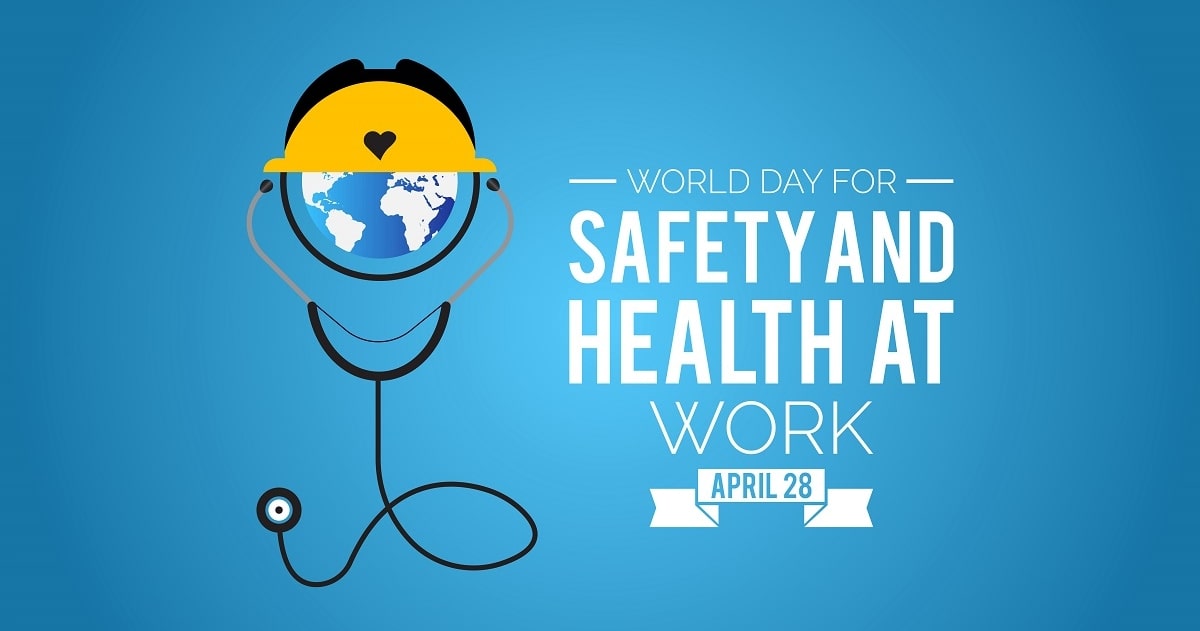Summary: April 28 is designated as World Day for Safety and Health at Work. Learn about the importance of workplace safety awareness at every level, from governments and employers to workers, to help reduce injuries and fatalities on the job. What is World Day for Safety and Health at Work?
Every worker has a right to a safe and healthy work environment.
World Day for Safety and Health at Work, held every April 28, is an international campaign to promote safe and healthy workplaces to help reduce the number of work-related deaths and injuries worldwide. It has been observed by the International Labour Organization (ILO) for 20 years.
2.3 million people die annually due to occupational accidents or work-related diseases worldwide. Many of the 317 million workplace incidents a year result in extended absences from work. The economic burden that these accidents place on governments is costly. Days lost to work-related causes represent
4% up to 6% of global GDP. Eighty-six percent of work-related deaths come from disease, with an estimated 6,500 people dying from occupational illnesses compared to 1,000 a day from fatal occupational accidents.

World Day for Safety and Health at Work Theme
On World Day for Safety and Health at Work Day, The United Nations, ILO, and other organizations, communities, individuals and government bodies work together to promote workplace health and safety. The United Nations 2030 Agenda for Sustainable Development Report sets a global plan to end poverty, protect the planet and ensure prosperity for all. Occupational safety and health data have become critical for countries around the world to meet the report’s commitments.
The
World Day for Safety and Health at Work 2023 theme explores how to implement a safe and healthy working environment as a fundamental principle and right at work. The ILO will host a
live event on Friday, April 28 at 7:30 eastern time to promote this right, and the presenters will provide informative discussions on the actions ILO tripartite constituents can take moving forward.
History of World Day for Safety and Health at Work
The
International Labour Organization (ILO) began observing World Day for Safety and Health at Work on April 28, 2003, to stress the prevention of accidents and diseases at work globally. The observance helps raise awareness as part of ILO’s Global Strategy on Occupational Safety and Health to reduce the number of workplace deaths and injuries.
April 28 is also the
International Commemoration Day for Dead and Injured Workers, a day to honor the victims of occupational accidents and diseases.
ILO’s mission is to advance opportunities for people to obtain decent and productive work in conditions of freedom, equity, security and human dignity. The organization promotes rights at work, boosts social protection, and strengthens the dialogue for work-related issues. ILO understands that it is a shared responsibility between governments, employers, and workers to prevent death, injuries, and disease and promote safe work environments.
How to Observe World Day for Safety and Health at Work
There are many ways to observe World Day for Safety and Health at Work, including:
- Invite a workplace safety expert to your business to conduct specialized training
- Create safety training activities with your staff
- Follow #WorldDayForSafety or #WorkSafe on social media

Importance of Workplace Safety Programs
Workplace injuries in the United States have declined over the past several years. However, accidents can still happen and cost individual businesses thousands of dollars per year in medical and other expenses. According to the Bureau of Labor Statistics, in 2021, there were approximately
2.9 million nonfatal workplace injuries and illnesses and nearly
5,200 workplace fatalities - the highest annual rate since 2016. The
National Safety Council approximated the costs of workplace injuries and deaths at $167 billion.
Investing in
workplace safety programs brings savings in workers’ compensation and other medical costs, and also provides large financial savings for companies in the long run. Employers and leaders that enforce safety procedures and regulations provide safety training, education, and occupational health programs create a safe work environment and improve employee loyalty. Management should communicate the
safety program clearly to the workers, involving them in the formation and continuous implementation of the program. Other important elements for a safety program include:
- Worksite analysis to identify and access current hazards
- Hazard prevention and control
- Continual training for workers, supervisors and managers

Loss Control Services from AmTrust Financial
AmTrust’s
Loss Control Department knows that having a robust workplace safety program is key to a proactive approach to minimalizing injuries, incidents and controlling costs. We can provide the right
safety resources and
commercial property safeguards to ensure their ongoing success.
Contact us today for more information about creating a customized loss control program for your organization.
This material is for informational purposes only and is not legal or business advice. Neither AmTrust Financial Services, Inc. nor any of its subsidiaries or affiliates represents or warrants that the information contained herein is appropriate or suitable for any specific business or legal purpose. Readers seeking resolution of specific questions should consult their business and/or legal advisors. Coverages may vary by location. Contact your local RSM for more information.